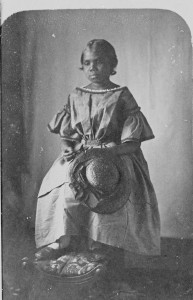Bessy Flower
Bessy Flower was born sometime in 1851 and died on 14th January,1895. A Minang Noongar, she was born in King Georges Sound, Albany. She lived at Annesfield mission until she was 16 but spent most of her adult life in Victoria. Bessy Flower is remembered for her gifts as a pianist and singer, for her dedication to teaching, and as a strong Noongar woman who fought to keep Aboriginal families together.
